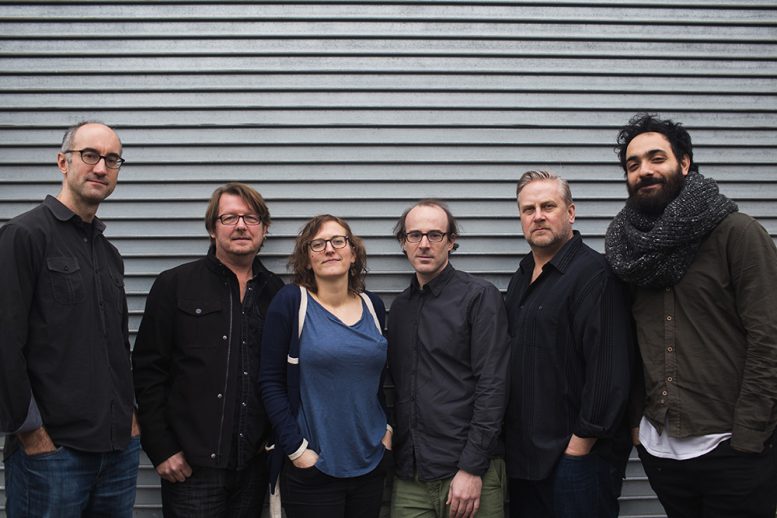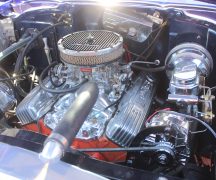By DAVID DUPONT
BG Independent News
Composer and bandleader Ken Thomson admits to having “a tortured relationship” with jazz.
Thomson, who plays clarinet and saxophone, loves jazz and wants to play music that reflects its aesthetics.
He’s not, though interested in recording a session devoted to jazz with a capital “J.” Instead he straddles the line between the contemporary art music and jazz with his quintet Slow/Fast, brass band Gutbucket and his involvement with the new music super group the Bang on a Can All Stars.
He’ll bring his newest project, the Ken Thomson Sextet to Toledo Thursday, Oct. 4, at 8 p.m. in the Toledo museum of Art’s GlasSalon.
The album “Sextet” was released in September, and it represents further development from his work with Slow/Fast. “There’s definitely a through line from the last couple records,” Thomson said in a recent telephone interview. “My idea was to challenge myself, and to have an expanded canvas to work with.”
To that end, he dropped the guitar from the five-piece Slow/Fast line up, to “buy” himself a couple more horns. He created the sextet by adding another reed player, Anna Webber on saxophone, and a trombone — Alan Ferber on the recording, but Nick Finzer for this 10-day tour. Adam Armstrong plays bass and Daniel Dor is the bassist.
The plumped up wind section has significant implications. Now Thomson has a larger palette to work with and explore. The horns, including Thomson on alto saxophone and Russ Johnson on trumpet, take on some of the harmonic duties of the guitar.
The band’s debut session wore its duel allegiances on its sleeve. The cover art is a kid’s wagon, evoking the cover of jazz composer Thelonious Monk’s “Monk’s Music” album. Like that album Thomson starts with a chorale — in his case an orchestration of Gyorgy Ligeti’s “Passacaglia ungherese.”
These are apt guideposts. Both composers wrote knotty, difficult music that nevertheless sings.
Thomson’s music takes up that challenge.
Most of the music is written out, melodies that twist and soar, dart and dash, all with a distinct, yet subtle sense of swing. Thomson leaves “careful spaces” for the players to improvise. Sometimes they ride over just bass and drums, often the other horns provide the harmonic backgrounds. Sometimes they mix it up with the horns improvising under, over, and through each other.
This approach does pose a physical challenge for the horn players, especially the trumpeter and trombonist, who end up with “their horns in their faces” for long stretches. They have made suggestions of where they need a break, Thomson said.
All the band members are highly respected bandleaders in their own right. Ferber, who visited Bowling Green State University as a guest artist last year, has extensive credits as a writer and instrumentalist. Webber has won a Guggenheim Fellowship for composition.
“What’s cool about having a group that’s really accomplished is I can lean on them a little bit,” he said. If something’s not working, he can seek their suggestions.
They all have played together in various contexts. When Thomson writes it’s not an abstract exercise. He thinks about how each of individual will execute the parts. And he pushes them a little bit.
One way he’s kept matters simple is the instrumentation. Everyone plays one instrument. So the leader gets to leave his clarinets at home, and Webber leaves her flute at home. Having instrumentalists doubling on a multiple horns is common practice, but Thomson feels he can elicit different textures by voicing the horns in different registers, employing them in different combinations, and changing the harmonic voicings.
That also requires highly skilled players who are comfortable throughout their instruments’ ranges.
That’s evident in “Passacaglia” with the trombone playing in its deepest register, normally the province of a bass trombone, and then the trumpet coming in playing high, evoking the chirp of a piccolo trumpet.
“Even with everyone playing one horn, there’s so many possibilities,” Thomson said.
Thomson’s work is just one manifestation of the opening of borders among genres.
Paul Simon has long drawn on some of Thomson’s Bang on a Can colleagues for his touring band including guitarist Mark Stewart who has been the songwriter’s music director for a decade. On Simon’s farewell tour he employed the chamber music group yMusic as the horn and string section.
Thomson said Simon has “shown up in our world, at our concerts. He’s definitely interested in that.”
More young musicians, such as Tyshawn Sorey, are accomplished in both jazz and composition.
“The world is getting smaller,” Thomson said. That’s been evident going back to the 1990s, and the scene revolved around the New York venue, The Knitting Factory.
“People are starting to notice,” he said.
Still, he said, there is resistance in jazz departments in some conservatories and universities to drawing from contemporary music.
The melting of boundaries in music reflects how the world is changing, Thomson said. “When you have someone who’s influenced by the world that’s exciting. … To me it’s a clear evolution of where this music is going.”





